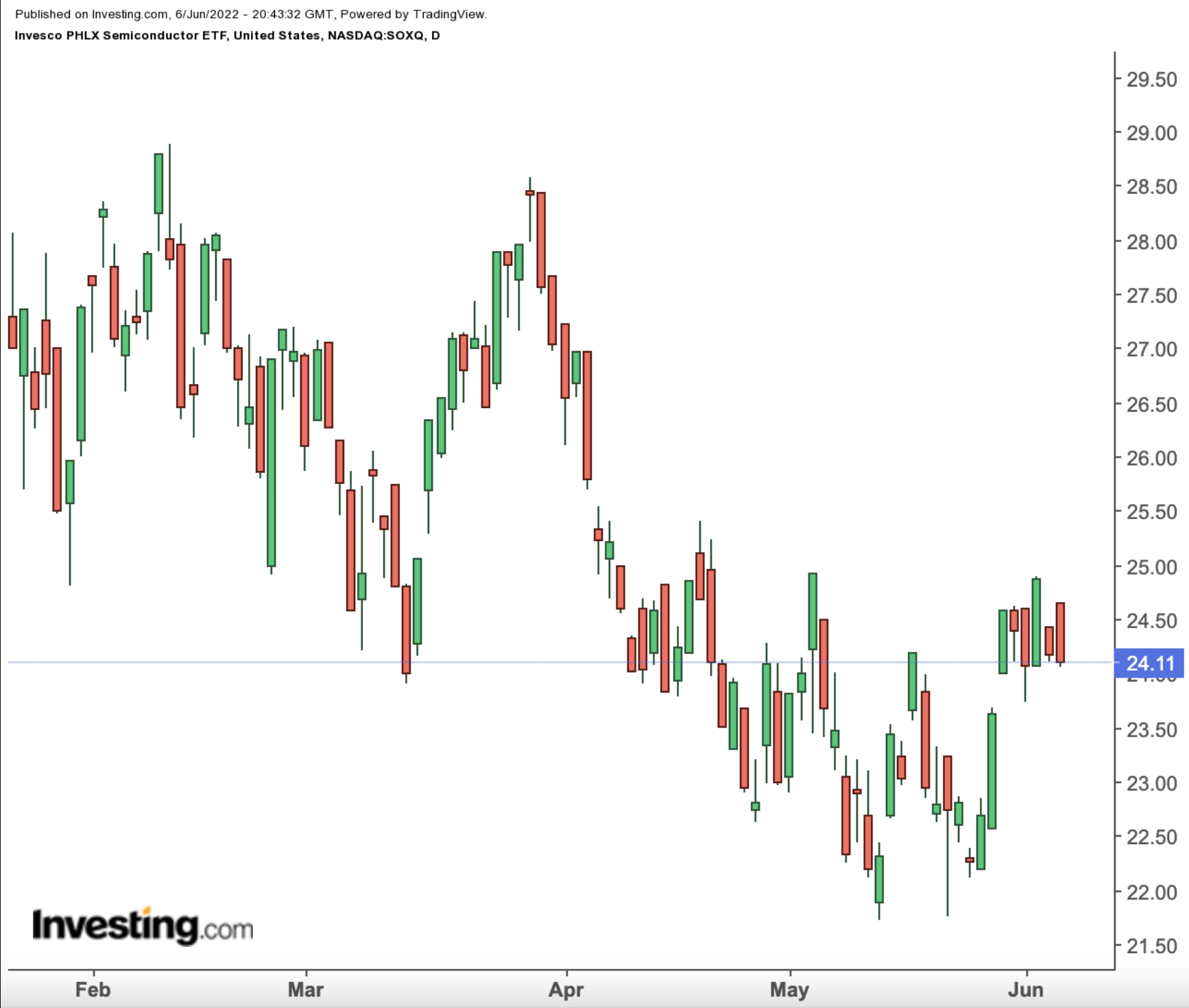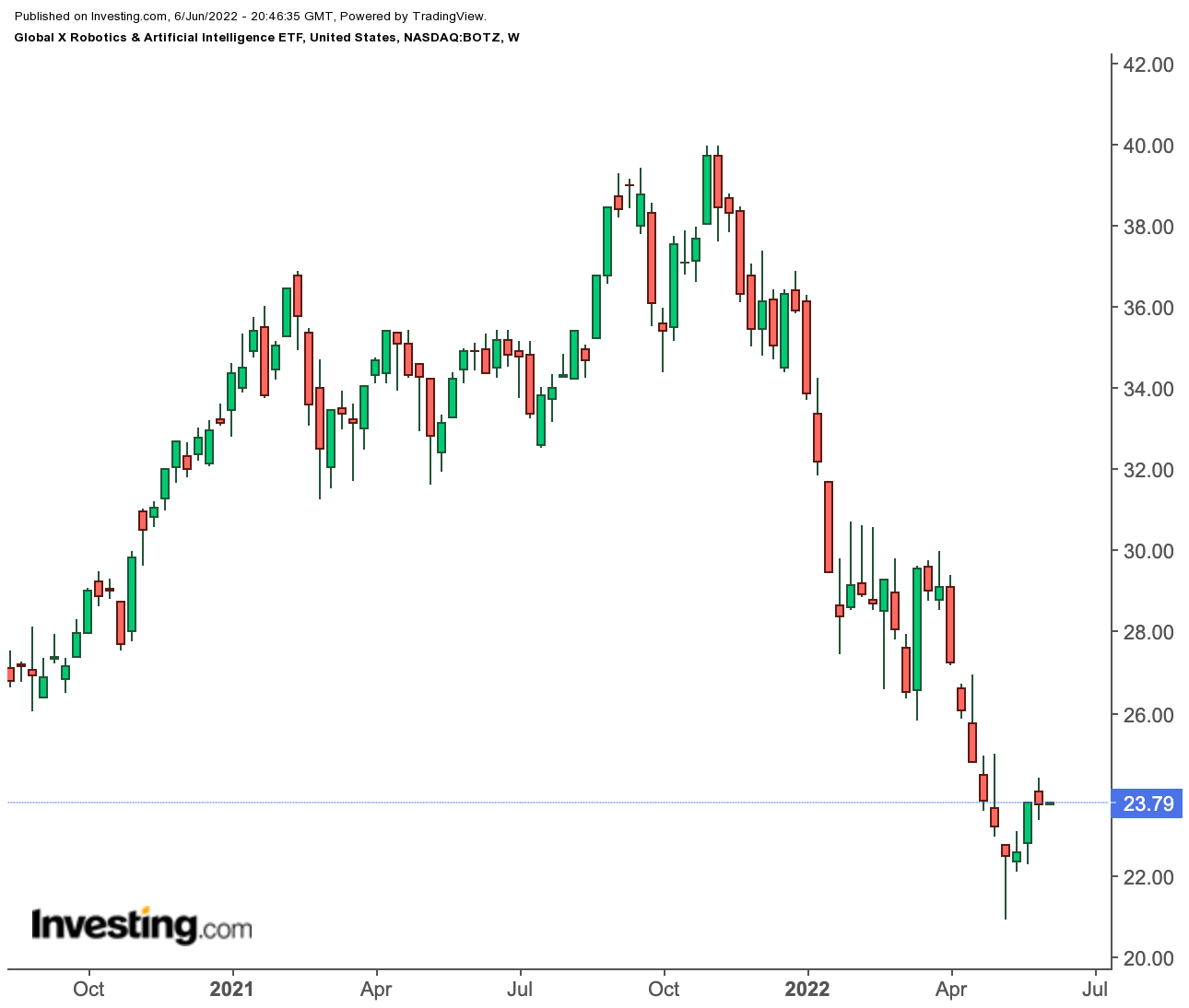This year's broad market selloff has been particularly harsh on high-flying tech stocks. Once Wall Street's pandemic darlings, these companies have taken the brunt of several macroeconomic headwinds, such as high inflation and rising interest rates.
For instance, the NASDAQ 100 Technology Sector Index has lost over 25% YTD, while the S&P/ASX All Technology Index has declined about 31% during the same period.
However, after five months of straight declines, some believe enough is enough.
Today's article introduces three exchange-traded funds (ETFs) that may appeal to contrarian investors ready to push the 'buy' button in tech stocks.
1. Technology Select Sector SPDR Fund
- Current Price: $140.00
- 52-week range: $127.04 - $177.04
- Dividend yield: 0.81%
- Expense ratio: 0.13% per year
The first fund on today's list is the Technology Select Sector SPDR® Fund (NYSE:XLK). It invests in companies that offer software, hardware, storage solutions, and communications equipment. It also provides access to chip stocks. The fund was first listed in December 1998.

XLK tracks the Technology Select Sector Index and currently holds 76 stocks. Around a third of the portfolio is in software firms. Then come technology hardware, storage & peripherals (23.20%), semiconductors & semiconductors equipment (20.52 %), and IT services (17.27%).
The top 10 stocks comprise close to two-thirds of $41.8 billion in net assets. Microsoft (NASDAQ:MSFT) and Apple (NASDAQ:AAPL) have the largest slice, each with almost 22%. Other top names on the roster are Visa (NYSE:V), Mastercard (NYSE:MA), NVIDIA (NASDAQ:NVDA), Broadcom (NASDAQ:AVGO), and Adobe (NASDAQ:ADBE).
XLK hit a record-high in late 2021. However, it is down about 19.49% so far year-to-date (YTD).
Trailing price-to-earnings (P/E) and price-to-book (P/B) ratios stand at 22.30x and 8.08x. Technology bulls who would especially like high exposure to MSFT and AAPL shares should keep the fund on their radar.
2. Invesco PHLX Semiconductor ETF
- Current Price: $24.11
- 52-week range: $21.72-$32.01
- Dividend Yield: 1.0%
- Expense ratio: 0.19% per year
Recent research by McKinsey points out that the chip industry's "aggregate annual growth could average from 6 to 8 percent a year up to 2030." Meanwhile, most analysts concur that the supply shortages that have constrained the semiconductor sector should start easing in the months ahead.
Yet, the PHLX Semiconductor Sector Index is down over 21% YTD. Therefore, our next fund, the Invesco PHLX Semiconductor ETF (NASDAQ:SOXQ), could appeal to investors looking for a suitable entry point into chip shares. The fund began trading in June 2021, while net assets stand at $62.8 million.

SOXQ currently holds 30 stocks. Over 40% of the portfolio is held in the leading 10 names. Among them are Broadcom, Intel (NASDAQ:INTC), Advanced Micro Devices (NASDAQ:AMD), Qualcomm (NASDAQ:QCOM), NVIDIA, KLA-Tencor (NASDAQ:KLAC), and Analog Devices (NASDAQ:ADI).
As most long-term portfolios are likely to benefit from exposure to the leading chip stocks, SOXQ deserves readers' attention. So far in the year, SOXQ has lost 22.9%. Forward P/E and P/B ratios are at 17.61x and 5.88x.
3. Global X Robotics & Artificial Intelligence ETF
- Current Price: $23.79
- 52-week range: $20.88 - $39.99
- Dividend yield: 0.25%
- Expense ratio: 0.68 % per year
Over the past decade, innovation has been a major growth driver on Wall Street. Metrics suggest that:
"The Global Artificial Intelligence (AI) Robots Market size is expected to reach $37.9 billion by 2027."
Such an increase from the current levels would mean a compound annual growth rate (CAGR) of over 32%.
Our third tech fund is the Global X Robotics & Artificial Intelligence ETF (NASDAQ:BOTZ), which invests in global companies at the center of innovation and development behind robotics and artificial intelligence (AI). The fund was launched in September 2016.

BOTZ currently holds 38 stocks. Industrials lead with 44.3%, followed by information technology (38.7%), health care (11.4%) and consumer discretionary (2.6%).
The top 10 names comprise close to two-thirds of $1.6 billion in net assets. Among them are NVIDIA; robotics and automation powerhouse ABB (NYSE:ABB); Japanese electrics and automation group Keyence (OTC:KYCCF); robotic surgery leader Intuitive Surgical (NASDAQ:ISRG), and Japan-based Fanuc (OTC:FANUY), which focuses on factory automation (FA) machinery.
BOTZ has lost a third of its value since January. Trailing P/E and P/B ratios currently stand at 35.49x and 4.10x. Despite the decline of over 33% this year, we believe this thematic fund could find a place in growth-oriented portfolios.
